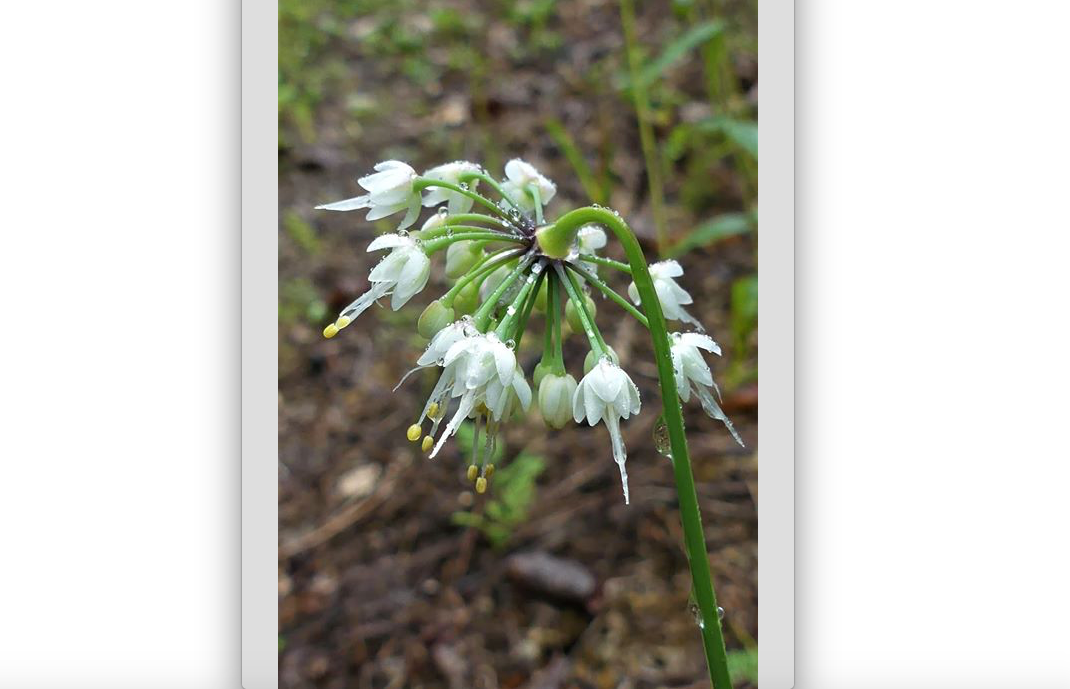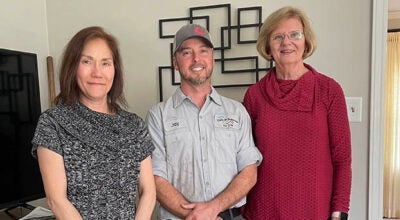The Wild Onion Controversy
Published 7:45 am Thursday, November 8, 2018

- This Allium may be a shale barren nodding onion or just a variant of the more common nodding onion, but, oh, the fun in learning about both.
As many of you know, I manage a Virginia Wildflower Community Page on Facebook. It has just under 2,000 members, many of whom are very active. They include individuals who are quite knowledgeable about plants in Virginia, as well as others who really know very little about any type of plant. It can get interesting. Many people hike, post photos from areas of the state that I don’t get to visit on a regular basis, and ask lots of questions. Sometimes they post photos of unusual plants that cause a commotion.
Just recently, one of the page regulars, who is an avid hiker, posted a series of photos of an Allium that she found growing on shale in Augusta County. It had white flowers, blunt tepals, and was blooming later than is usual for Allium cernuum, nodding onion. I must confess that I didn’t pay much attention to it and just figured that it was an odd variant of A. cernuum.
And then it all began. Two individuals who are highly knowledgeable about Virginia native plants popped up on the page and asserted that it certainly wasn’t A. cernuum, but A. oxyphilum, the shale barren nodding onion. This species is only found in five counties in Virginia. It’s a bit of a mystery species and somewhat controversial. The Flora of Virginia and several other sources recognize it as a separate species; other resources don’t. Research conducted in 2014 and cited by NatureServe, however, seems to confirm its uniqueness. This research mentions the tepal apex shape, tepal color, and habitat, all matching the plant found in Augusta County.
I forwarded the photos and some notes on the location to the Department of Conservation and Recreation in Richmond, specifically the state botanist and the individual primarily responsible for the compilation of the Flora. There was interest, excitement, and a tacit acknowledgement that the plant was probably A. oxyphilum. There was also a collective deep breath and an admission that this species is problematic. Before the next edition of the Flora is published, they said, they need to reach a consensus as to whether this is a separate species or a variant of A. cernuum. They said that, if I needed definitive answers any time soon, I might be disappointed. And they also gave me a list of names of experts who are working on this plant and might be able to add another opinion to the mix. I have work to do.
On most days, there isn’t this much out-and-out excitement on the wildflower page. In early spring, I get lots of photos of dandelions with requests for identification. Sometimes there are angry outbursts from purists who are upset that I’ve posted a photo of a nonnative species (We have lots of them, and, no, they aren’t all invasive; nonnative doesn’t automatically mean invasive). But most weeks someone has an odd plant or an absolutely beautiful photo of a common plant. And then, once in a while, there is a surprise, and we all get excited. That’s what’s makes hiking in the rain and finding plants so fascinating. You just never know what you might find. Any one of us is capable of finding something extraordinary. Sharing a find with others, teaching them about it is equally extraordinary. Happy hunting.
CYNTHIA WOOD is a master gardener who writes two columns for The Herald. her email address is cynthia.crewe23930@gmail.com.



